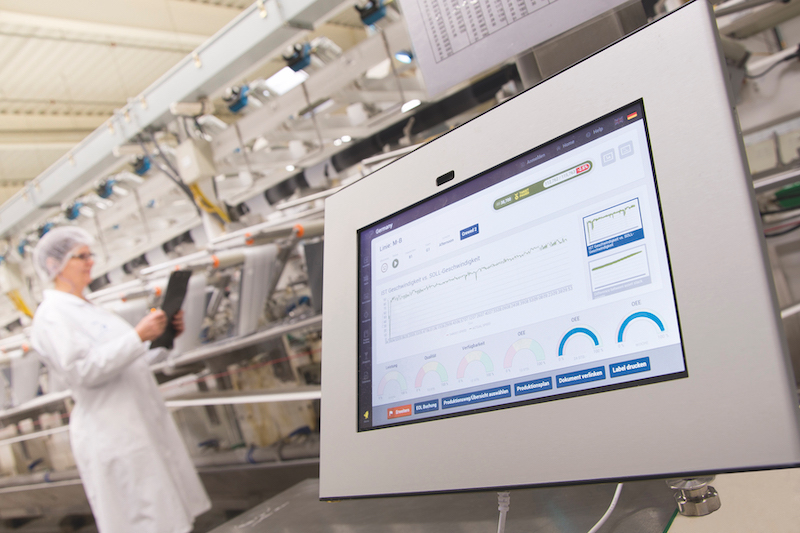Switching into safety engineering - Six of the best
During 2021, with our partners at Euchner, we have carried a series of six articles and associated webinars designed to help machine builders and end users understand the many aspects of ensuring that their machinery is safe to use and meets relevant standards and regulations. Andy Pye reviews what we covered.
In the first article, we covered the fundamentals of safety engineering, including the distinction between personnel and process safety, how safety and security converge in a modern factory and the interaction between man and machine when total isolation is not possible.
Following in our second episode, we covered how to select the correct safety device, and explained how to prevent accidental or deliberate manipulation (sabotage) of safeguarding measures.
In the third event, we looked at regulations and standards, including relevant Directives, which still apply in the UK. We covered the CE Mark and the shortly to become mandatory UKCA Mark, only to find out days later that the deadline for adopting it has been delayed for (at least) 12 months. Some wonder if it will ever happen!
Episode 4 covered how to design a good machinery safety control system and how to apply relevant standards/guidance and undertake a viable risk assessment.
The fifth release covered some key modern technologies and developing issues, including Mode Selection, Electronic-Key-Systems and the implications of collaborative robots.
Safety system upgrade case study
This example results from the soaring CoVID-related demand for hygienic products. It is a converting machine that required an extensive upgrade at the Nice-Pak wet wipes production plant in Flint, North Wales. Nice-Pak’s risk assessment on this high-speed machine determined that the safety functions needed to meet the requirements of Performance Level PLd/PLe, according to EN-ISO-13849 – this potentially meant a whole lot of on-machine field wiring!
The bespoke upgrade is based around Euchner's novel CTM interlocking switches and their associated IO-Link interface. “Nice-Pak was looking not just for safety components, but for a complete system providing high-integrity safety capabilities coupled with information about the safety status and diagnostics," explained David Dearden, Euchner’s UK&I Country Manager. "Euchner experts can offer machinery safety consultancy and bespoke application guidance to help customers get the best possible outcome.”
The CTM’s internal monitoring allows Nice-Pak to connect multiple switches in series and still achieve high levels of safety-integrity up to Category 4/PLe. An Euchner ESM-CB unit is used to transmit the status of the individual switches to a higher-level Rockwell Automation control system via IO-Link, this can all be done over standard off-the-shelf M12 interconnects if required.
In addition to the safety signals, the simplified wiring architecture adopted here significantly reduces the amount of field wiring required to meet Nice-Pak’s demand for world-class OEE performance. To transmit even basic diagnostic data, conventional safety systems generally require extensive additional cabling; yet despite the very simple series connection, the Euchner installation can communicate high-level diagnostics and user data in the standard M12 multipole connectors used to link between the switches. This includes the number of interlocks in the series-chain, the number of individual operations and attempts of manipulation. Nice-Pak engineers have replicated this information on the machine’s HMI display, presenting the operating & maintenance teams with real-time information allowing them to get the plant up and running in record time.
“A major benefit is the diagnostic coverage, while also utilising multiple connected locking door switches wired in series," said Gareth Roberts, Nice-Pak’s Group EC&I Engineer. "As a result, we saved both time and money. The whole assembly was extremely quick to install and is performing exactly as expected.”
Euchner undertook pre-assembly of the interconnects, which helped carry out the installation in less than half the time that a conventional installation would have taken. Not only did this allow the machine to get back into production earlier than planned, but it also reduced the installation cost.
Over the coming months into 2022, we will add to the portfolio of case studies, which will be published periodically on the Drives and Controls website.
The previous five articles/webinars are all available for viewing on our website and YouTube channel. During the live events, extensive use was made of the Zoom Chat function, and we will be compiling a compendium of all the comments, attachments and questions which form a perfect companion to the seminars and articles in the series. A big thank you to all the attendees, panellists and industry specialists who contributed!






